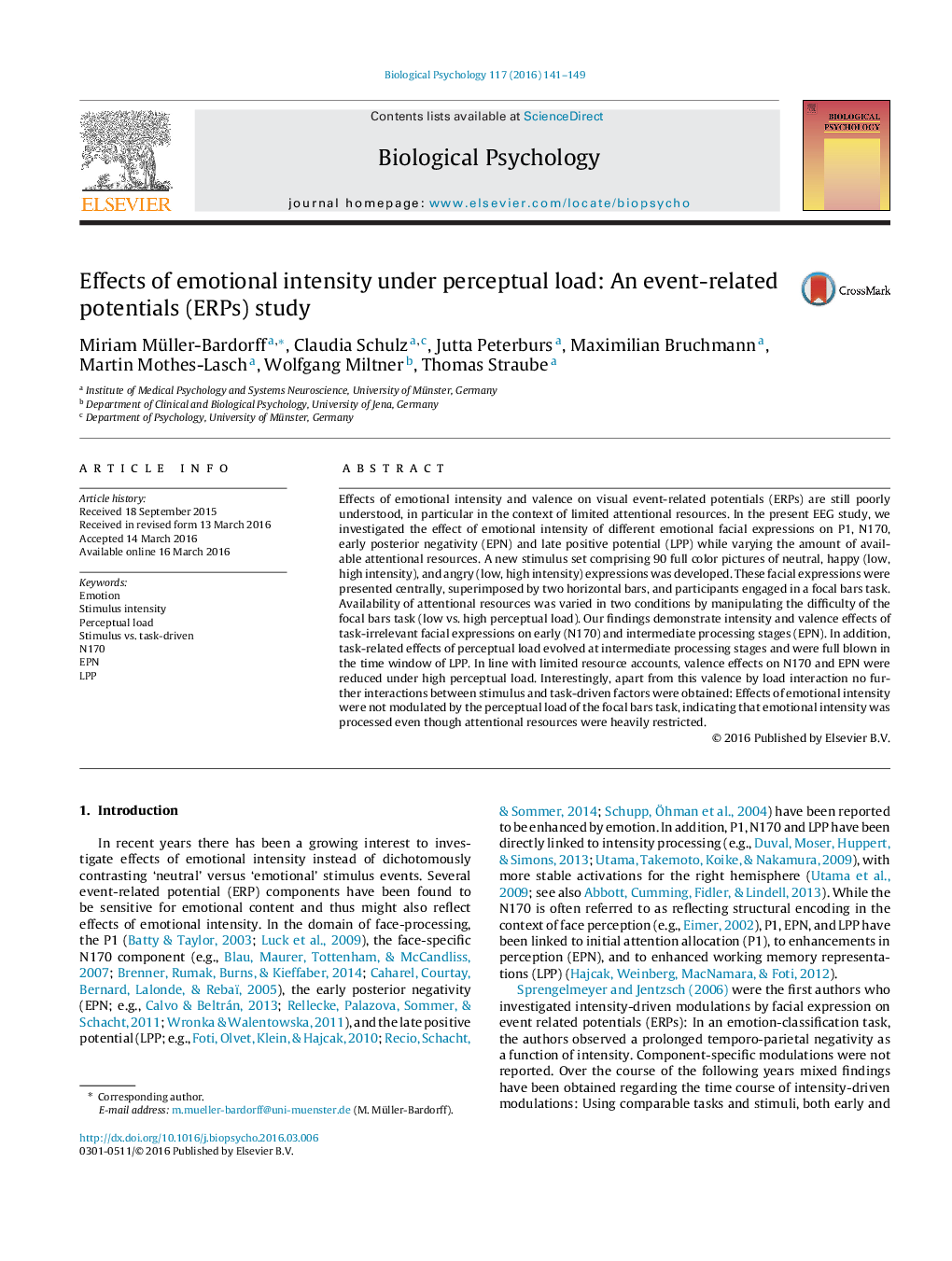| Article ID | Journal | Published Year | Pages | File Type |
|---|---|---|---|---|
| 920706 | Biological Psychology | 2016 | 9 Pages |
•Combined investigation of stimulus and task-driven effects.•Novel stimulus set with ecologically valid intensity levels.•Valence and intensity effects (N170, EPN) by task-irrelevant facial distractors.•Preserved intensity processing under highly demanding task conditions.
Effects of emotional intensity and valence on visual event-related potentials (ERPs) are still poorly understood, in particular in the context of limited attentional resources. In the present EEG study, we investigated the effect of emotional intensity of different emotional facial expressions on P1, N170, early posterior negativity (EPN) and late positive potential (LPP) while varying the amount of available attentional resources. A new stimulus set comprising 90 full color pictures of neutral, happy (low, high intensity), and angry (low, high intensity) expressions was developed. These facial expressions were presented centrally, superimposed by two horizontal bars, and participants engaged in a focal bars task. Availability of attentional resources was varied in two conditions by manipulating the difficulty of the focal bars task (low vs. high perceptual load). Our findings demonstrate intensity and valence effects of task-irrelevant facial expressions on early (N170) and intermediate processing stages (EPN). In addition, task-related effects of perceptual load evolved at intermediate processing stages and were full blown in the time window of LPP. In line with limited resource accounts, valence effects on N170 and EPN were reduced under high perceptual load. Interestingly, apart from this valence by load interaction no further interactions between stimulus and task-driven factors were obtained: Effects of emotional intensity were not modulated by the perceptual load of the focal bars task, indicating that emotional intensity was processed even though attentional resources were heavily restricted.
